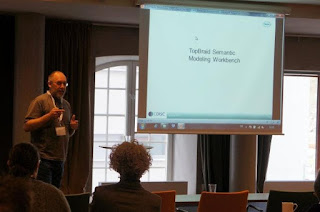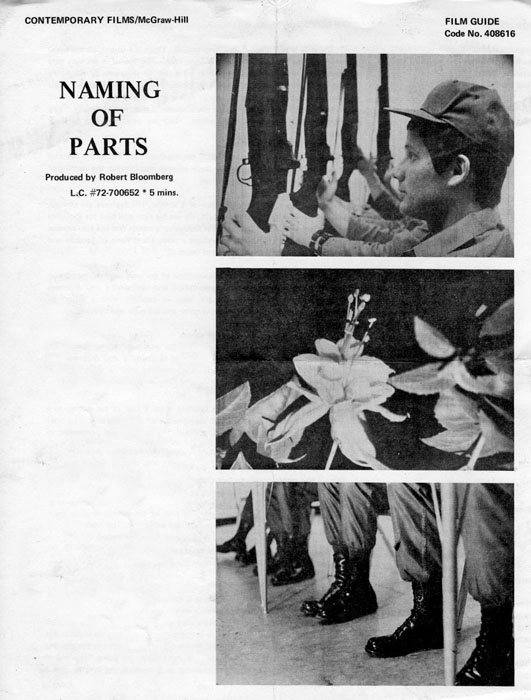In mid April we did a presentation at the 2012 CDISC (Clinical Data Interchange Standards Consortium) Interchange Europe with the title: Semantic models for CDISC based standard and metadata management (see our
slides and
short paper). This time in a sunny, but chilly, Stockholm at a very nice hotel (Elite Marina Tower). Last year Frederik Malfait, consulting at Roche, and I, working for AstraZeneca, had two different presentations at the 2011 conference in Brusses. See my blog post:
Linking Clinical Data Standards.
Since then we have seen more interest in semantic web standards in the CDISC community, see for example the article in Applied Clinical Trials Online (
@Clin_Trials):
Digital Data, the Semantic Web, and Research, by Wayne Kubick, the new CTO of CDISC. This year Frederik and I did a joint presentation with a
key messsage to the CDISC organisation: "Put semantics into the semantics". That is, to start using semantic web standards and linked data principles for the whole suite of CDISC standards. See below our list of proposals.
In my introduction I described the current situation when the question now is "Not when, but how" to best adopt CDISC standards. At the same time the different CDISC standards are not linked and published in different formats and so called metadata registeres (MDR) are requested for robust life cycle management of standards.
Real world use
Linked Data cloud to grow across AstraZeneca R&D
In AstraZeneca we have a new program called Integrative Informatics (i2) establishing the components required to let a linked data cloud grow across R&D. A key component is the URI policy for how to make for example a Clinical Study linkable by giving it a URI, that is a Uniform Resource Identifier, e.g. http://research.data.
astrazeneca.com/id/
clinicalstudy/D5890C00003. This is an identifier for a clinical study with the study code D5890C00003 that should be persistent and not dependent on any system. In the same way we will give guidance on how to use URI:s to make other key entities such as Investigator and Lab linkable. Also standard data elements from CDISC and internal ones to be managed in a future MDR should have URI:s to make them linkable. For more information on how URI:s are being used in for example the UK and US governments, see my
URI design page.
A semantic web standard based MDR in Roche
Frederik described the schema, content and architecture of Roche Biomedical MDR. And then he went through a demo using a RDF representation of a CDISC standard example and of an internal Roche standard (you will find the
screenshoots from the demo in end of the slide deck). He first showed how the standards could be viewed using a general tool (
TopBraid Composer from TopQuadrant, but could be any other RDF tool such as
Protégé, a common open source tool). On slide 20-28 you can see how SDTM model v.1.2, SDTM IG v3.1.2, and SDTM CT:s, all are linked together (for example Observation Class: Event - Domain: AE - Variable: AEOUT - Submission value: NOT RECOVERED/NOT RESOLVED). And then he showed the same RDF representation via the application Roche Global Standard Data Browser (slide 29-37). Frederik also showed how the linked data standards can be exported in SAS and Excel formats (slide 42-50). And finally, he showed an example from a Roche standard questionnaire.
Proposals to CDISC
In the slides you can see that Frederik had to transform CDISC standards into RDF using a schema he developed for Roche and give them URI:s in a Roche namespace (e.g. http://gdsr.roche.com/cdisc/sdtmig-3-1-2#Column.AE.AEOUT for one of the data elements). This is not a ideal way, instead we would like CDISC to provide these. Hence the drive from our leadership in Roche and AstraZeneca for Frederik and myself to push back to CDISC.
Below a draft list of proposals to CDISC:
- Decide on a URI design for CDISC standards (e.g. http://id.cdisc.org/sdtm).
- Review the schema Frederik has proposed for the core MDR in CDISC SHARE.
- Publish the new SDTM v1.3 and SDTM IG v.3.1.3 as RDF in XML, JSON, Turtle, and N-Triples formats
using the reviewed schema and URI design. (As options to current publication formats, i.e PDF, html, csv, xml/odm.)
- Work together with NCI on enhancing the RDF/OWL version of NCI Thesaurus. Also review the option to use the RDF/SKOS standard and apply linked data principles. Publish coming versions of CDISC CT:s as
RDF in XML, JSON, Turtle, and N-Triples.
- Work together with NCI on enhancing the RDF/OWL representation of BRIDG/ISO21090 model and apply linked data principles to make all BRIDG classes, properties and ISO21090 data types linkable.
- Extend the MDR schema for CDISC SHARE for linkage to relevant BRIDG classes and properties and to ISO21090 data types.
- Start exploring semantic web standards and linked data principles also for clinical data, including making invidual clinical data points linkable using URI:s and annotating them using existing and emerging clinical standard terminilogies and ontologies.








